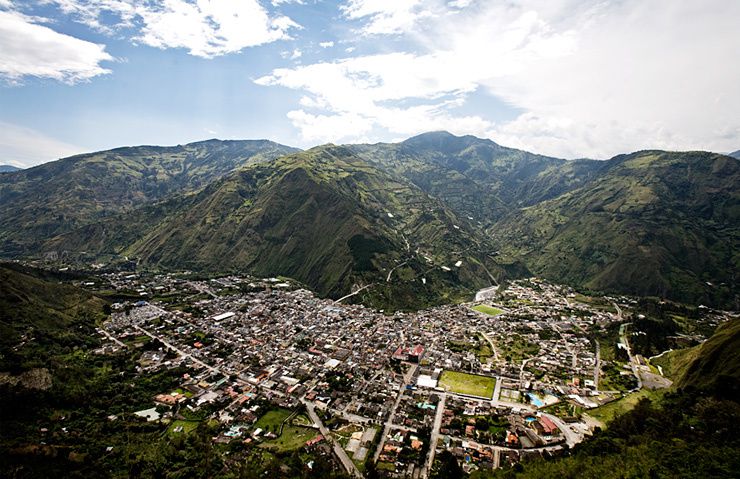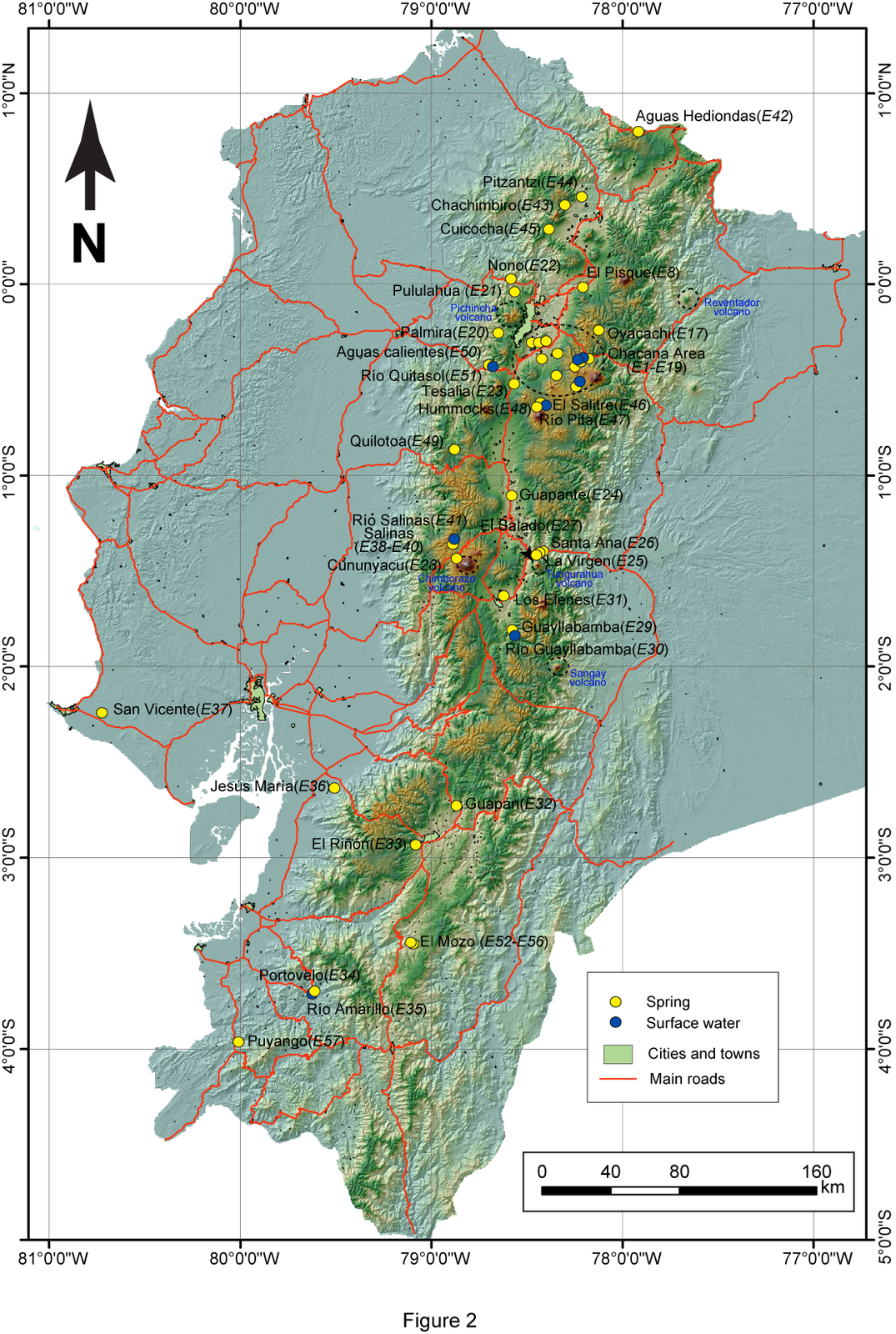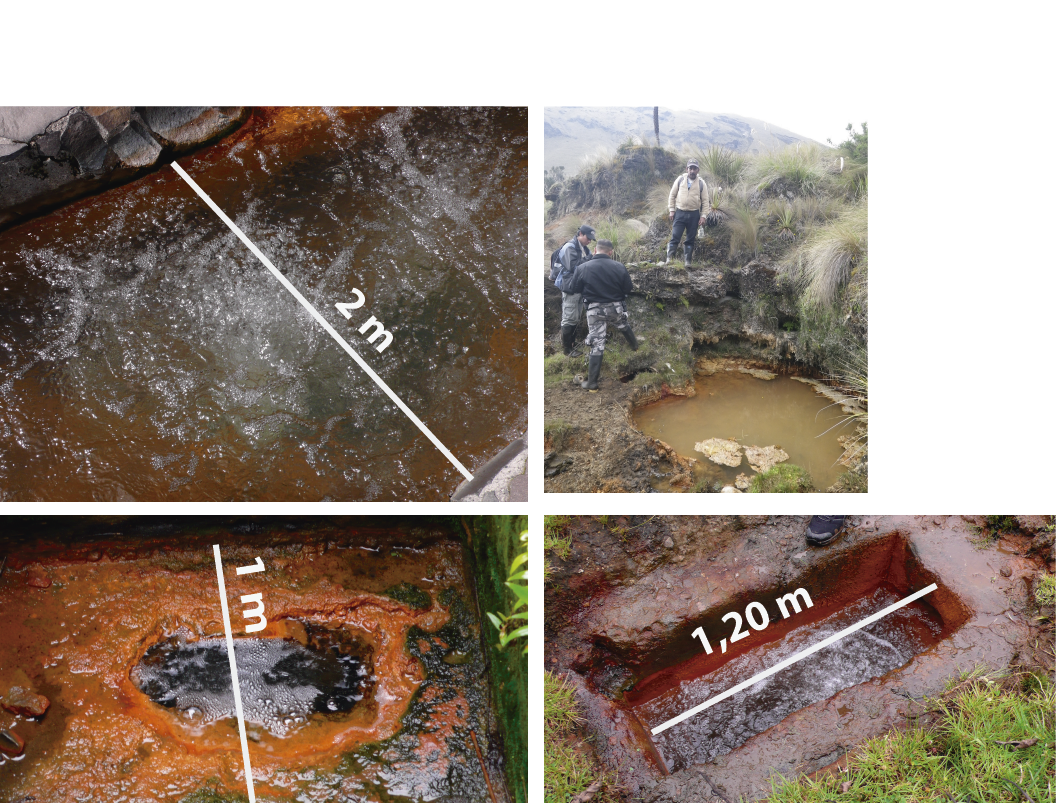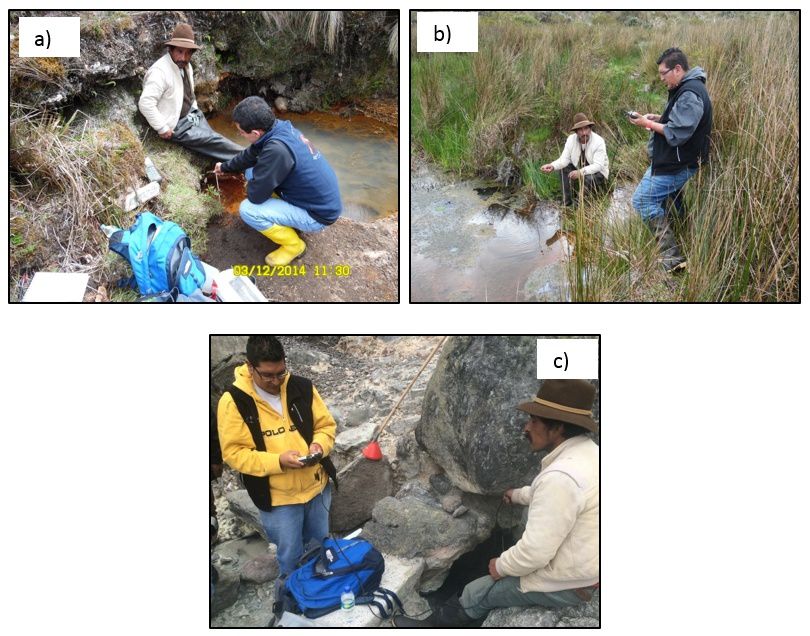Actualité volcanique, Articles de fond sur étude de volcan, tectonique, récits et photos de voyage
Par Bernard Duyck
Baños de Agua Santa, in the province of Tungurahua, at the foot of the volcano of the same name, is "a city with spa resorts" as the name suggests. - photo Equateurvoyage
Ecuador is home to 54 hot springs. They are associated with tectonic fault systems and / or volcanic.
The IGEPN has studied the physicochemical parameters in 2009; the Institute has just published a report on the fatal dangers of some of them, as well as recommendations.
Distribution of thermal springs in Ecuador, located almost entirely on the volcanic Cordillera - Map IGEPN
Waters temperatures vary between15 and 74.5 ° C, and a pH of 4.6 to 9.2.
High electrical conductivity is to be related to the presence of various ions in solution: sodium, potassium, magnesium, calcium, fluoride, chloride, bromide, sulfate, bicarbonate and silica.
Various trace elements characterize the waters: Li, Be, Al, Ti, V, Cr, Mn, Fe, Co, Ni, Cu, Zn, As, Se, Rb, Sr, Mo, Cd, Sb, Cs, Ba, Hg , Pb, Th, U, B.
These may be toxic if their concentration exceeds the threshold limit for humans, 5 ppb for arsenic, 1 ppb for mercury, 0.5 ppm for boron. To avoid poisoning both men and animals, it is recommended not to consume these waters without knowing with certainty their chemical composition.
Some water has a high gas content, either dissolved or free ... which gives them an effervescence. The gas phase consists essentially of CO2 (carbon dioxide), and methane, hydrogen sulfide, carbon monoxide, oxygen, nitrogen, helium, argon and steam.
H2S, CO2 and CO can be dangerous for the living at high concentrations. CO2 is increasingly concentrated in low areas (depressions) and confined spaces, such as the output level of thermal water.
In January 2015, six people were killed in the source Tangali near Otavalo. Two people died when entering the catchment tanks, near the Tungurahua. At Aguas Hediondas, a death occurred in baths releasing H2S.
The IGEPN recommends not to approach the waters where splash of gas located in depressions, not to enter in catchment centers nearby hot springs, not to build saunas directly above water outlet, or hot springs.
Ecuador - a. Source Oyacachi, capture is closed. Closed to the public. - b. Potrerillos in Carchi - source ferruginous bicarbonate, dangerous for its high CO2 content. - c. Capture Nono, closed to the public. - d. capture Pululahua, rich in CO2. This type of capture must be dozens or even hundreds of meters from open public swimming pools- Doc.IGEPN
Ecuador - Sampling and physico-chimic measures in sectors of a) Potrerillos, b) Arteson, and c) Aguas Hediondas. - Doc. IGEPN
Thème Magazine - Hébergé par Overblog







